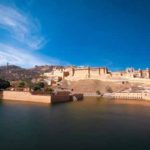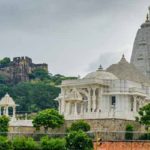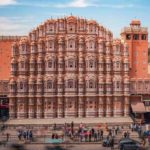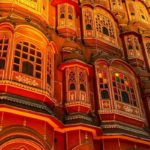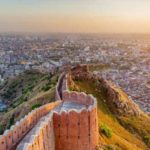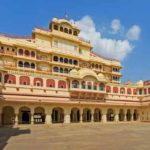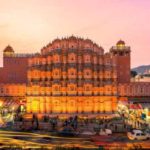Top Historical Places to Visit In Jaipur The prominence of a royal and affluent heritage comes through in all the beautiful historical places in Jaipur. The land of the Maharajas and Rajputana kingdoms, Jaipur is the current state capital of Rajasthan, it is also known as ‘Pink City’ due to the rosy buildings adorning the old city area which was a part of the original cityscape. But the history of this land dates back centuries when only Amber (fort) existed.
The then ruling King Raja Jai Singh II decided to establish a new capital, and in the course because of his architectural ambitions Jaipur and many of its attractions came to being, including Chandpole Gate, Rambagh Palace, Jaigarh Fort, and others. Furthermore, the historical monuments in Jaipur like the Hawa Mahal tells a tale of how the royal women would experience the outer world from behind a massive structure with over 900 windows.
Or how the Jantar Mantar, an astronomical observatory housing nineteen precise instruments, including the world’s largest stone sundial was way ahead of its time. Not just that, one can explore the magnificence of the City Palace in the heart of Jaipur where generations of the Royal family have lived or choose to visit the many other points of interest that are listed below Top Historical Places to Visit In Jaipur.
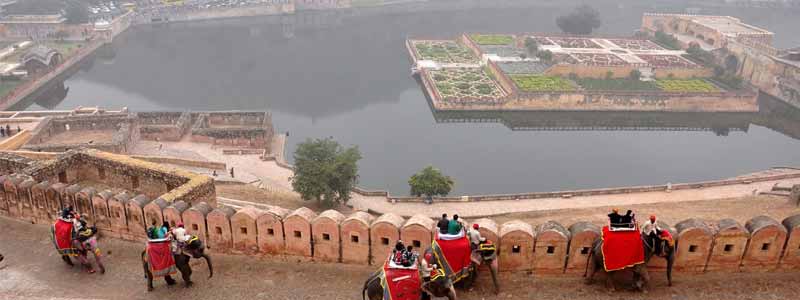
Amer Fort: Architectural Marvel
The legendary Amber Fort is a seven centuries old Rajputana palace located around 11 kilometers away from Jaipur. Recognized as a UNESCO World Heritage Site, it is among the most magnificent architectural wonders of Top Historical Places to Visit In Jaipur.
Set up on the Aravalli hills, the Amber fort (also known as Amer Fort) was constructed by Raja Man Singh I in 1592 and was completed by Mirja Raja Jai Singh. Built in red and yellow sandstone complemented by white marble, the splendid fortress offers a breathtaking view of the Maota Lake.
The splendid palace is divided into four courtyards and includes attractions such as Diwan-e-Aam, Diwan-e-Khas, Siladevi Temple, and the Sheesh Mahal. The main entrances to the palace are Suraj Pol and Chand Pol, both of which lead to the main courtyard called Jaleb Chowk. You can enjoy an elephant ride to the fort entrance or take a car. After spending three to four hours exploring the fort you can dive into its history with the beautiful light and sound show Rajasthan Budget Tour.
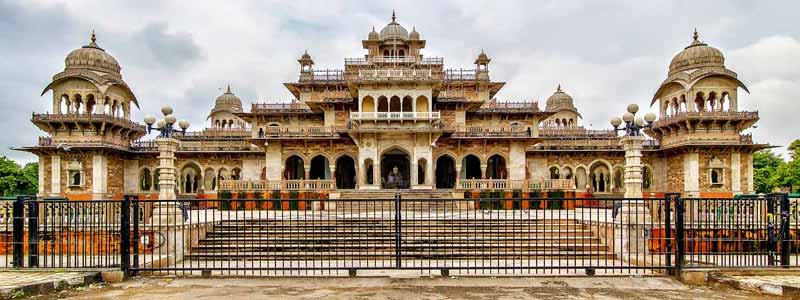
Albert Hall Museum: Illuminating Hours
Jaipur’s historical journey and rich heritage can be best explored through its museums. Albert Hall Museum is among the most prominent museums in the city and is renowned for its well-blended architecture. It was built in 1876 as a concert hall and its design had a stark resemblance to the Victoria and Albert Museum of London.
The foundation was laid in 1876 by the Prince of Wales during his Jaipur visit and was converted into a museum by the King of Jaipur, Maharaja Sawai Madho Singh II in 1881. The charming Indo-Saracenic dome structure with intricately engraved arches is built in red sandstone.
You can explore the culture of Rajasthan through the 16 galleries of this museum. Paintings, portraits, carpets, musical instruments, jewelry, ammunition, woodwork, brassware, antique coins, local pottery, handicrafts, and sculptures are on display at the museum. Other attractions worth exploring at the complex are an aviary, a greenhouse, and a zoo.
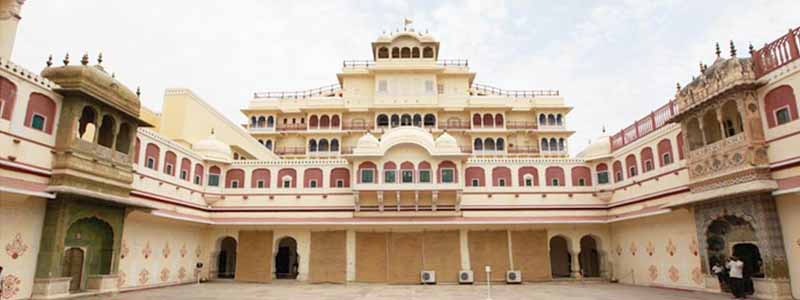
City Palace: The Royal Abode
Located in the heart of the old city, the City Palace, comprises magnificent courtyards, gardens, cenotaphs, and royal buildings. It was conceived and built by the founder of Jaipur, the Rajput King Maharaja Sawai Jai Singh II, and expanded by the rulers who inhabited it later.
The palace has elements of Rajput, Mughal, and European architecture intricately put together to exude opulence. Members of the last ruling royal family still reside in a private section of the palace. The most prominent sections of the palace are Mubarak Mahal, Chandra Mahal, Maharani’s Palace, Maharaja Sawai Man Singh II Museum, and Bhaggi Khana.
You can witness the unique collection of royal costumes including Pashmina shawls, Benaras silk sarees, and other clothes of Maharaja Sawai Madho Singh I at the museum. Rajput weaponry dating back to the 15th century and well preserved Rajputana paintings, Sanganeri prints, and folk embroidery pieces adorn the walls and ceilings of the palace.
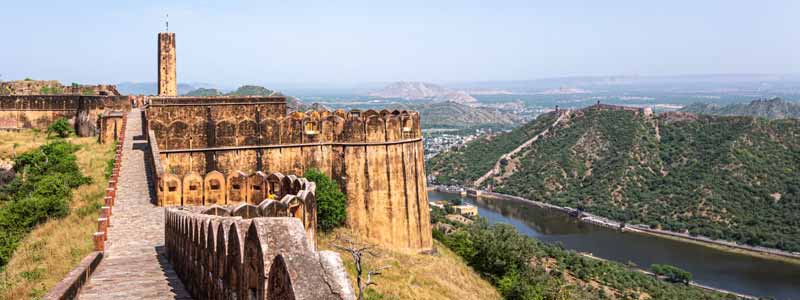
Jaigarh Fort: Glimpse Of the Victorious Past
Built on ‘Cheel ka Teela’ or the Hill of Eagles, Jaigarh fort was built to secure the Amber Fort. Located 500 feet above sea level, the fort offers panoramic views of the Amber Fort and its lush surroundings.
Constructed in 1726 under the aegis of Maharaja Sawai Man Singh II, the fort has a splendid blend of Indo-Persian architecture. Intricate lattice work windows adorn the cyclopean walls of the fort to offer unobstructed views of the vicinity. You can walk through the magnificent red sandstone fort and imagine life in the era of the warrior kings that inhabited it ages ago.
One of the major attractions at the fort is ‘Jaivana Cannon’ which is the world’s largest cannon on wheels and has been fired just once since it’s existence. Other attractions include the central watchtower, the water heritage walk, Shubhat Niwas (the assembly hall of warriors), and armory. The complex also houses several prominent temples such as Kal Bhairav Temple, Ram Harihar Temple, Lalit Mandir, Aram Mandir, and Vilas Mandir.
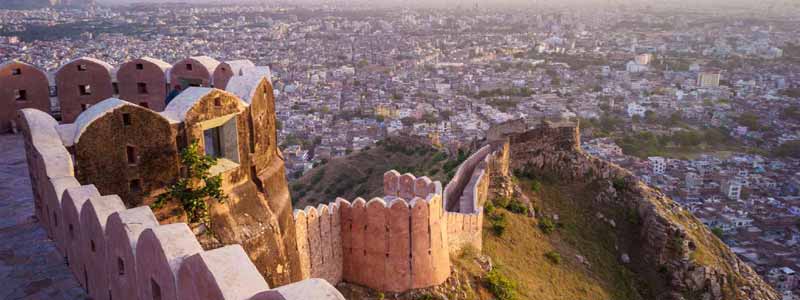
Nahargarh Fort: Serene Ambiance
Nahargarh Fort was built amidst the Aravalli Hills to fortify the royal residence of the Rajput warriors, the Amber Palace. This majestic structure has overlooked the beautiful city of Jaipur for 300 years. It was constructed by Maharaja Sawai Jai Singh II in 1734 as a retreat palace for the kings and queens. It’s fascinating Indo-European architecture and glorious past has attracted tourists from across the world.
The Fort has witnessed important historical events during the 18th Century. You delve deeper into history as you visit the temple dedicated to the Kings of Jaipur and also explore the astounding Sheesh Mahal, visit the wax museum, and click pictures near Jal Mahal.
Other not-to-be-missed attractions are ‘Madhavendra Bhawan’ built by Sawai Madho Singh and the temple of Rathore prince Nahar Singh Bhomia, whose spirit haunted the construction site until the fort was dedicated to him.

